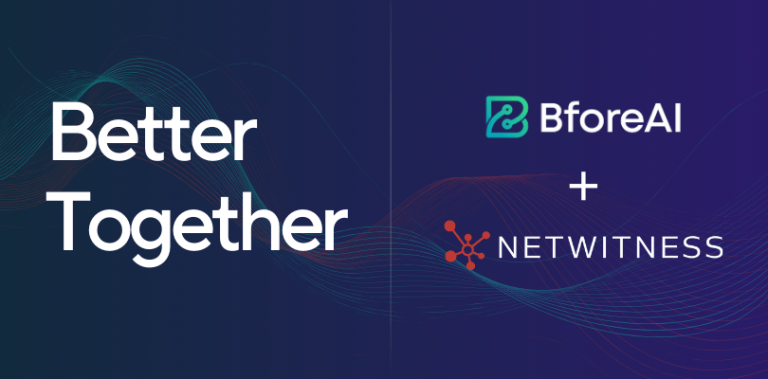Vacation is behind you, and despite the summer break, you are already tired of your corporate life. It is a relaxed fall afternoon and just the right circumstances to have a discussion with a few of your industry friends about launching a new business venture and escaping your corporate routine. The idea matures and several months later, you launch a new fintech startup with two colleagues. As part of the launch, you inevitably register a new .com domain name that will represent your brand. You try to pick a unique, catchy name for your company and URL and the domain registration only costs a handful of US dollars.
Several years later, your fintech is no longer a startup, but a multi-million dollar company with great market penetration and brand visibility. And that domain name you picked at the beginning? That domain now represents your brand, is the basis for your day-to-day operation through your IT network and email, and still costs the same handful of dollars to renew every year. This raises an interesting question: Does this insignificant amount of money really represent the domain’s value to your organization?
The financial services industry is a perpetual (and ever-growing) prime target for cyberattacks. As digital transactions and online banking continue to rise, so do the threats that aim to exploit vulnerabilities in domain management. Understanding and mitigating domain-related risks is critical for financial institutions to safeguard their operations and maintain trust with their customers. Let’s have a closer look at the various kinds of domain-related attacks that affect financial institutions and dive into domain risk management.
What are the most common vulnerabilities for domain risk management?
Typosquatting or Domain Spoofing
Typosquatting (a.k.a., domain spoofing) is a form of cybercrime where an attacker registers lookalike domain names similar to a legitimate domain but with slight alterations to the original domain name or typographical errors that trick the eye. These are the first steps taken to carry out phishing attacks, in which attackers use sophisticated techniques to trick users into revealing sensitive information.
Typosquatting subsequently involves the creation of a fraudulent site that mimics a legitimate one or diverts users to another fraudulent one. Banks are often targeted through phishing emails that appear to come from legitimate institutions but are actually crafted to capture login credentials or install malware. The use of lookalike domains is a growing tactic that makes it increasingly challenging for users to identify malicious sites. The rise of generative AI aids attackers in building sites that are often indistinguishable from the sites of legitimate brands.
Domain Name System (DNS) Vulnerabilities
The Domain Name System (DNS) serves as a critical backbone of the internet, translating human-readable domain names into IP addresses that computers use to communicate with one another. However, despite its essential role in facilitating seamless online navigation, the DNS is not immune to vulnerabilities. Attackers use mainly two techniques:
- DNS Spoofing, or DNS Cache Poisoning: These techniques involve corrupting the DNS cache of users so that they are directed to malicious sites instead of legitimate ones. Attackers exploit weaknesses in the DNS infrastructure to insert fraudulent entries, redirecting users and potentially intercepting sensitive information such as login credentials.
- DNS Hijacking: DNS hijacking occurs when attackers redirect domain traffic to malicious servers. This can be achieved through exploiting vulnerabilities in the DNS management system or through unauthorized access to domain registrar accounts. Once users are redirected, attackers can perform a variety of malicious actions, from data theft to deploying ransomware.
Domain Registration and Management Risks
Financial institutions must rely on domain registrars to manage their domain names. However, if a registrar’s security is compromised, it can lead to unauthorized changes or transfers of domains. Locking a company out of its domain can have devastating consequences for the victim organization. The criminal would then have the leverage to blackmail the owner and demand a consequent ransom.
Domain Expiration
If a domain registration lapses and is not renewed in time, it can also be seized by malicious actors. This risk highlights the importance of keeping track of domain expiration dates and setting up alerts to prevent accidental lapses.
What are the best practices to mitigate domain risk?
As for all cybersecurity risk management mitigation techniques, banks must combine people, processes, and technology to ensure complete coverage to mitigate domain risk.
Implement Strict User Access Management
Banks must choose reliable registrars that adhere to strict security standards and a steadfast commitment to monitoring registrar accounts for any suspicious activity is critical. Access to registrars should be thoroughly restricted, supported by strong and complex passwords, preferably stored in a password manager or managed through a privileged identity management solution. Using multi-factor authentication (MFA) for domain registrar accounts adds an extra layer of security.
Regular Monitoring and Alerts
Banks should implement continuous DNS monitoring tools that can help detect unusual changes or unauthorized access in domain activity. Setting up alerts for changes in DNS records or registrar details can provide early warnings of potential threats.
Domain Locking
Domain locking is a security feature that prevents unauthorized changes to a domain name’s registration and settings. By enabling domain locking, domain owners can protect their domains from being transferred to another registrar or having settings modified without their explicit consent.
Enable Renewal Warranty
A renewal warranty for domains is a type of protection offered by some domain registrars that ensures a domain name can be renewed even if the original registrant loses access to their account or fails to renew it before the expiration date. This service is designed to prevent unintentional loss of ownership over a domain due to various circumstances, such as forgetting to renew or losing account access.
Register Similar and Related Domains
Registering similar and related domains is a proactive strategy used by organizations to protect their brand, prevent cyber threats, and maintain a strong online presence. This practice involves acquiring domain names that are variations of or closely resemble the primary domain name of a business or individual. A common practice is to register the same name but with different top-level domains (TLDs) such as “.com”, “.net”, “.org”, or country specific TLDs (e.g., “.ch” for Switzerland). This is useful in preventing malicious actors from using these TLDs for nefarious purposes. The cost of owning these domains is generally much less than the cost of a cyberattack or customer reimbursement.
Enable DNS Security Extensions
DNS Security Extensions (DNSSEC) add security to DNS queries by providing a way to verify the authenticity of the responses. Implementing DNSSEC helps protect against DNS spoofing and cache poisoning by ensuring that users are directed to legitimate sites.
Predictive technologies through behavioral Artificial Intelligence (AI)
AI is transforming both attack and defense mechanisms in cybersecurity. Attackers use AI to automate phishing attacks, creating highly personalized and convincing emails or generating lookalike domains at scale. But on the defensive side, AI can enhance detection, and even prediction, of future attacks and remediation by identifying patterns and anomalies in domain activity.
These technologies would particularly be effective against domain spoofing or typosquatting. As one can imagine, it is impossible to register all lookalike domains with all their variations. Hence, a predictive security platform can put a particular domain under its supervision. As soon as an infrastructure has been set up with a lookalike domain and is classified as malicious, the system would take it down before the attack starts.
Conclusion
Domain-related risks are a significant concern for financial institutions as they navigate the complex cybersecurity landscape. By understanding these risks and implementing effective mitigation strategies, financial institutions can better protect their operations and maintain the trust of their customers. Proactive measures and vigilance are essential to staying ahead of evolving threats and ensuring a secure banking environment in 2025 and beyond.





